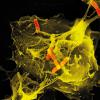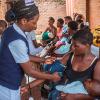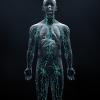Charlie Swanton outlines the work in cancer research that led to him being awarded a 2024 Louis-Jeantet Prize for translational medicine.
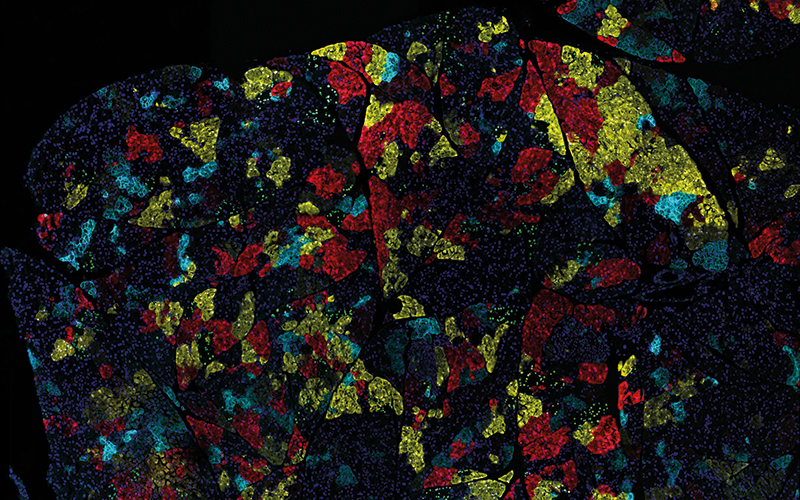
The Louis-Jeantet Foundation based in Geneva in Switzerland awards prizes each year to cutting-edge biomedical research programmes in progress across Europe. The remit of the foundation is to promote and support work that has the potential to drive major advances in clinical medicine, with a particular focus on cancer and cardiovascular disease.
Among the awards it hands out is the Jeantet-Collen Prize for Translational Medicine, which recognises work that is close to producing practical therapies for treating patients. The 2024 prize has just been awarded to Charlie Swanton and his team at the Francis Crick Institute for their research into the biology and behaviour of cancer cells.
How cancer evolves
Swanton’s lab at the Crick, where he is Deputy Clinical Director, investigates how tumours evolve, how they spread around the body, what causes them to become resistant to treatment, and how that resistance might be overcome. At the heart of this work is the study of heterogeneity, in other words the diversity of genetic mutations found in tumour cells, which gives cancers the ability to adapt to the changing biological and chemical environment around them.
The award of the Jeantet-Collen Prize is a recognition of the team’s efforts to understand how cancer evolves over space and time, says Swanton.
“In essence, this is a field where we see cancer through an evolutionary lens rather than as a sort of static entity. It’s something that is constantly adapting to its environment, whether that’s a metastasis, a new organ it has colonised, evasion of the immune system, or drug pressures caused by treatment.”
Clinical applications
A key criterion for winning the prize is the prospect of clinical applications coming out of the research. These are making good progress on several fronts, says Swanton. “The first of those practical applications is looking at new ways of prognosticating patients with cancer, that is understanding the risk of relapse so that we can better administer therapy to those who need it most and perhaps de-escalate therapy to those who don’t. We’ve developed prognostic tools that enable us to better define that risk within the tumour stage, and that includes gene expression signatures as well as circulating tumour DNA release as a marker as a poor outcome.”
A second practical application is the development of new approaches for adoptive T-cell therapies and vaccine therapies that target clonal neoantigens, or mutations, that are present in the cells of a tumour. “We think these are going to be the most potent immune therapeutics,” says Swanton.
A third aspect of the team’s work that has practical potential is the implications its findings might have for public health issues. “This includes the role of air pollution in lung cancer initiation, particularly among people who have never smoked. Broadly speaking, we have seen that exposure to air pollution can induce the tissue inflammation that catalyses the first invasive step of cancer.”
The TRACERx study
Most of the discoveries that have prompted these practical applications have come out of the TRACERx study, funded by Cancer Research UK. This 10-year study, started in 2014, has been one of the world’s biggest long-term investigations into lung cancer, recruiting more than 800 patients to clinical trials watched over by hundreds of researchers based at 13 hospitals across the UK. The mission of TRACERx was to look at cancer tumours in their entirety. “These were patients with early stage disease,” says Swanton, “so that we could follow their cancer and understand its evolution in the primary tumour through to either cure after surgical resection or metastatic relapse.”
Though recruitment to the study finished last year, the research team has recorded a number of key findings.
“Thanks to TRACERx we now understand more about how lung cancers evolve over a space and time,” says Swanton. “We now know what common mutations are present early on in the tumour evolution and present in every cell. We also know the driver events that are more common later on in tumour evolution present in some cells and not others. We hope in time that will help guide the practical use of therapies targeting those individual driver events.”
The team also developed new tools to track recurrence in real time despite the absence of any evidence of disease on the CT scan. “This is the concept of minimal residual disease where we can identify tumour DNA in the blood of patients after surgery, even though they have no evidence of disease on CT scan,” says Swanton. Based on this, new trials are being developed that escalate therapy for those patients where evidence of tumour DNA is found in their blood.
Charlie Swanton
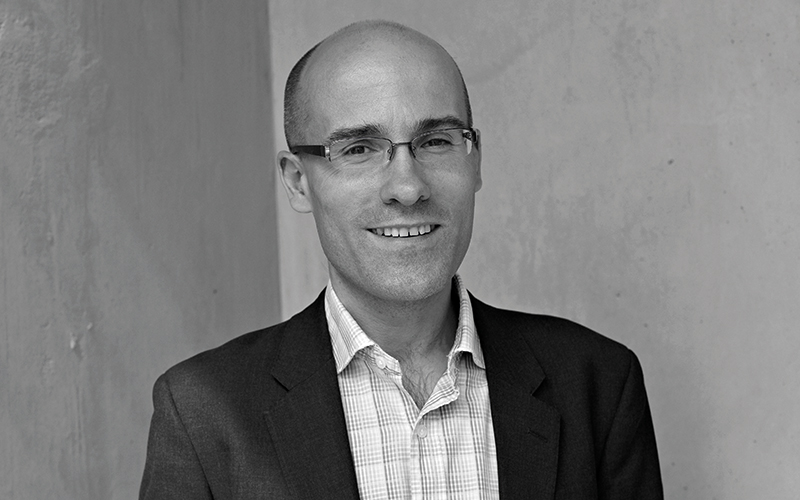
- 1998: PhD, Imperial Cancer Research Fund, London
- 2004: Clinical Scientist, London Research Institute, Cancer Research UK
- 2008: Group Leader, London Research Institute
- 2011: Chair of Personalised Cancer Medicine, University College London Hospitals
- 2015: Group Leader, Francis Crick Institute2016:
- 2016: Napier Professor of Cancer Medicine, Royal Society
Avoiding detection
Another significant finding has been an insight into the tactics that the cancer cells use to adapt to a predatory immune environment and avoid detection. “The immune cells are constantly changing, trying to limit the growth of the tumour,” says Swanton. “But we found the ways in which the tumour can overcome that hostile relationship through the loss of immune-recognition molecules. They evolve under the radar, so to speak, losing the mutations that are flagged to the immune system.”
Though the TRACERx programme has now come to an end, the data generated from the blood and tissue samples of the participants will continue to be studied for a few more years and may yield further insights into the behaviour and evolution of the tumours. While the Jeantet-Collen Prize has acknowledged this vital research, Swanton is keenly aware that the work is far from over. “While it’s wonderful to receive the prize, I’m aware there’s a deal of luck involved and it’s a recognition of the teamwork and amazing scientists I have around me and the funding bodies. Lots of people have made this possible. But there’s no room for complacency or anything like that because we have got a long way to go to cure this disease.”
Image credit | Alamy

